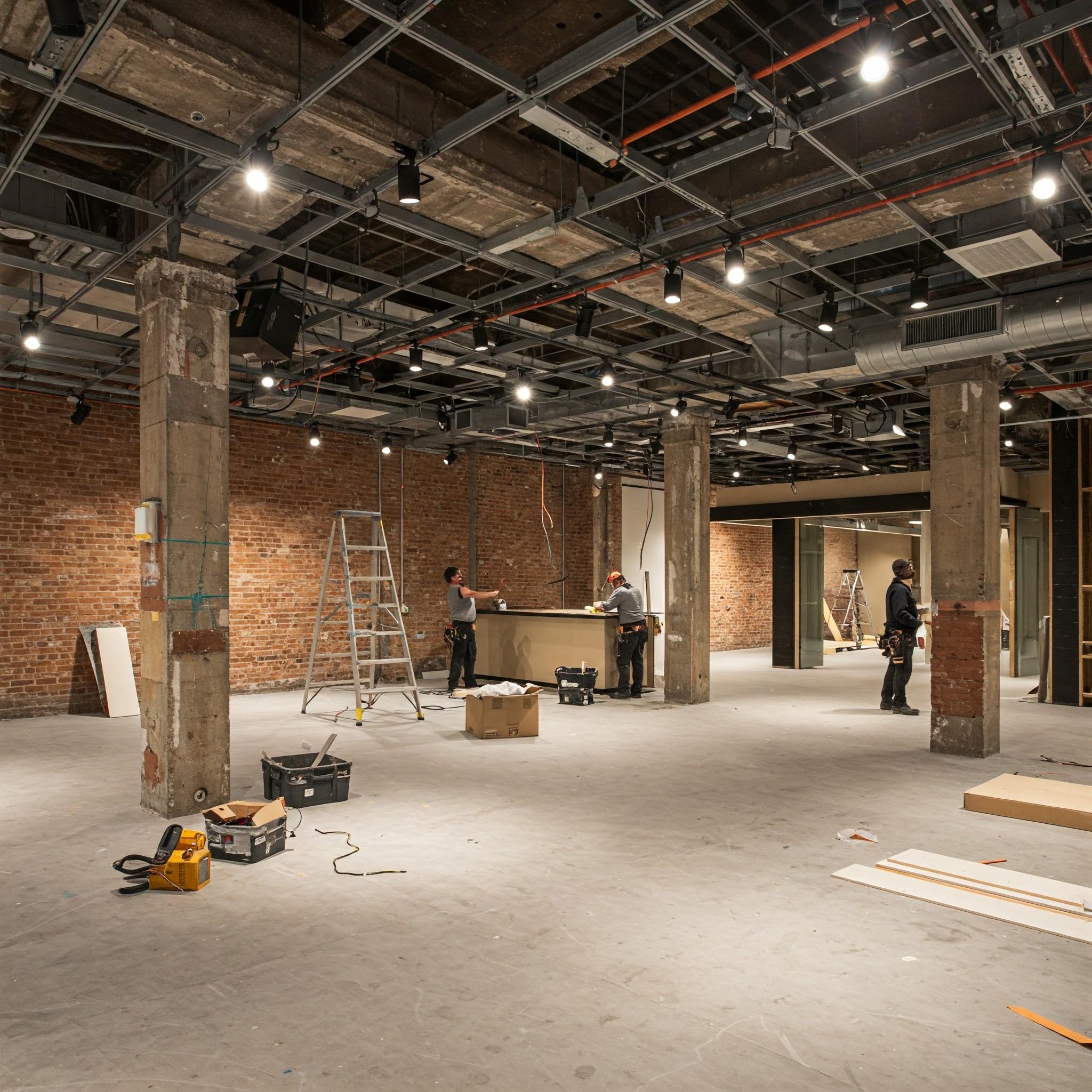Top 8 Electrical Design Precautions for Safe and Efficient Interior Fitouts

8 Electrical Safety Tips for Fitouts are essential for ensuring efficiency and hazard prevention in interior spaces. From proper circuit design to grounding techniques, taking the right precautions can enhance both safety and functionality. Designing a robust electrical system for interior fitouts is a critical part of modern commercial infrastructure. Whether it’s an office, retail space, or showroom, the electrical design must cater to high-performance standards, safety protocols, and future scalability. Compared to facilities like hospitals or data centers, interior fitouts focus heavily on customer interaction, aesthetics, and energy efficiency—making thoughtful electrical planning essential. This guide covers eight essential electrical design precautions that every professional should consider.
1. Prioritize Safety
Safety should be at the core of every electrical design. For interior spaces with frequent customer and staff interaction, minimizing electrical hazards is crucial. Implement Ground Fault Circuit Interrupters (GFCIs) and Arc Fault Circuit Interrupters (AFCIs) in high-risk areas to prevent electrical shocks and fire hazards. Always follow up-to-date safety codes and best practices to protect occupants.
2. Focus on Energy Efficiency
Design with energy efficiency in mind to reduce operational costs and support sustainability goals. Incorporate:
LED lighting systems
Energy-efficient appliances
Smart HVAC solutions
Additionally, adopt building automation systems (BAS) and energy management systems (EMS) to monitor and optimize energy usage.
3. Ensure Reliability
A reliable power supply is essential for business continuity. The electrical design should support uninterrupted power for lighting, heating, and cooling systems. Include redundancy measures like backup generators and uninterruptible power supply (UPS) units to ensure that critical systems remain functional during power failures.
4. Plan for Scalability
Your electrical system should adapt as your business grows or adopts new technologies. Ensure:
Extra circuit capacity
Flexible power distribution
Easily upgradable panels
This also allows for the future integration of electric vehicle (EV) charging and solar energy systems.
5. Integrate Fire Safety Measures
Interior fitouts often contain a dense network of wiring and electrical equipment, making them susceptible to fire. Equip the space with fire suppression systems like sprinklers and specialized fire agents to contain risks. Additionally, install smoke detectors and ensure proper wire management to minimize ignition sources.
6. Enhance Security
Security and surveillance are vital, especially in commercial environments. Integrate:
Access control systems
Motion sensors
CCTV surveillance
These systems not only deter unauthorized access but also improve overall occupant safety and operational confidence.
7. Comply with Codes and Standards
Every interior fitout must adhere to local and international electrical codes and safety regulations. Use certified components and hire licensed professionals. Regular audits, inspections, and documentation help maintain compliance and avoid penalties or system failures.
8. Enable Real-Time Monitoring & Management
Today’s commercial spaces benefit greatly from smart power monitoring systems. Install Power Distribution Units (PDUs) and remote monitoring software to track energy consumption, detect anomalies, and ensure system health—all from a central dashboard.
Conclusion
An efficiently designed electrical system is the backbone of any successful interior fitout. By focusing on safety, scalability, energy efficiency, and compliance, you ensure not just a functional space—but a future-ready one. Whether you’re designing a new space or upgrading an existing one, these precautions are essential to creating a resilient and high-performing environment.



